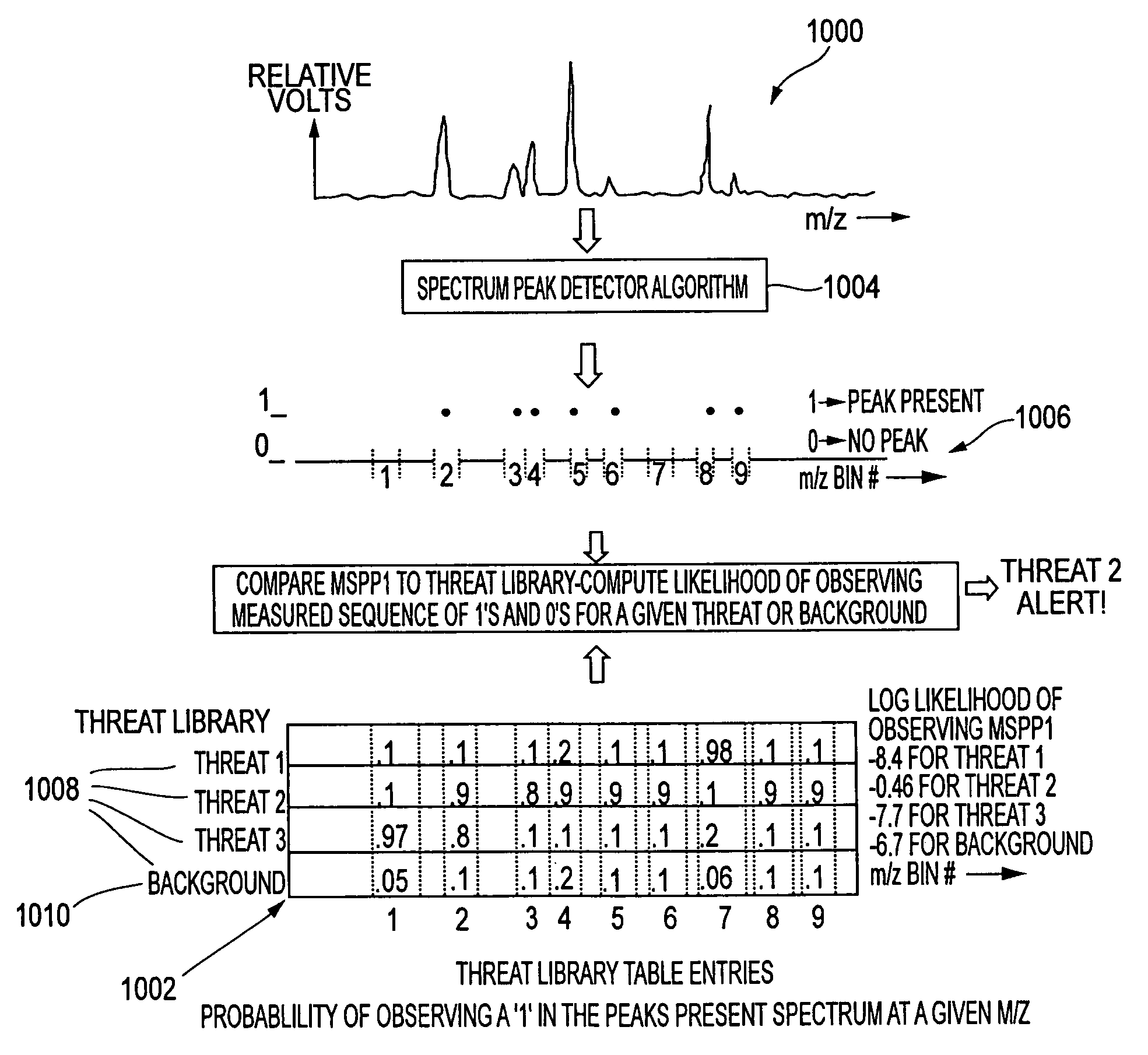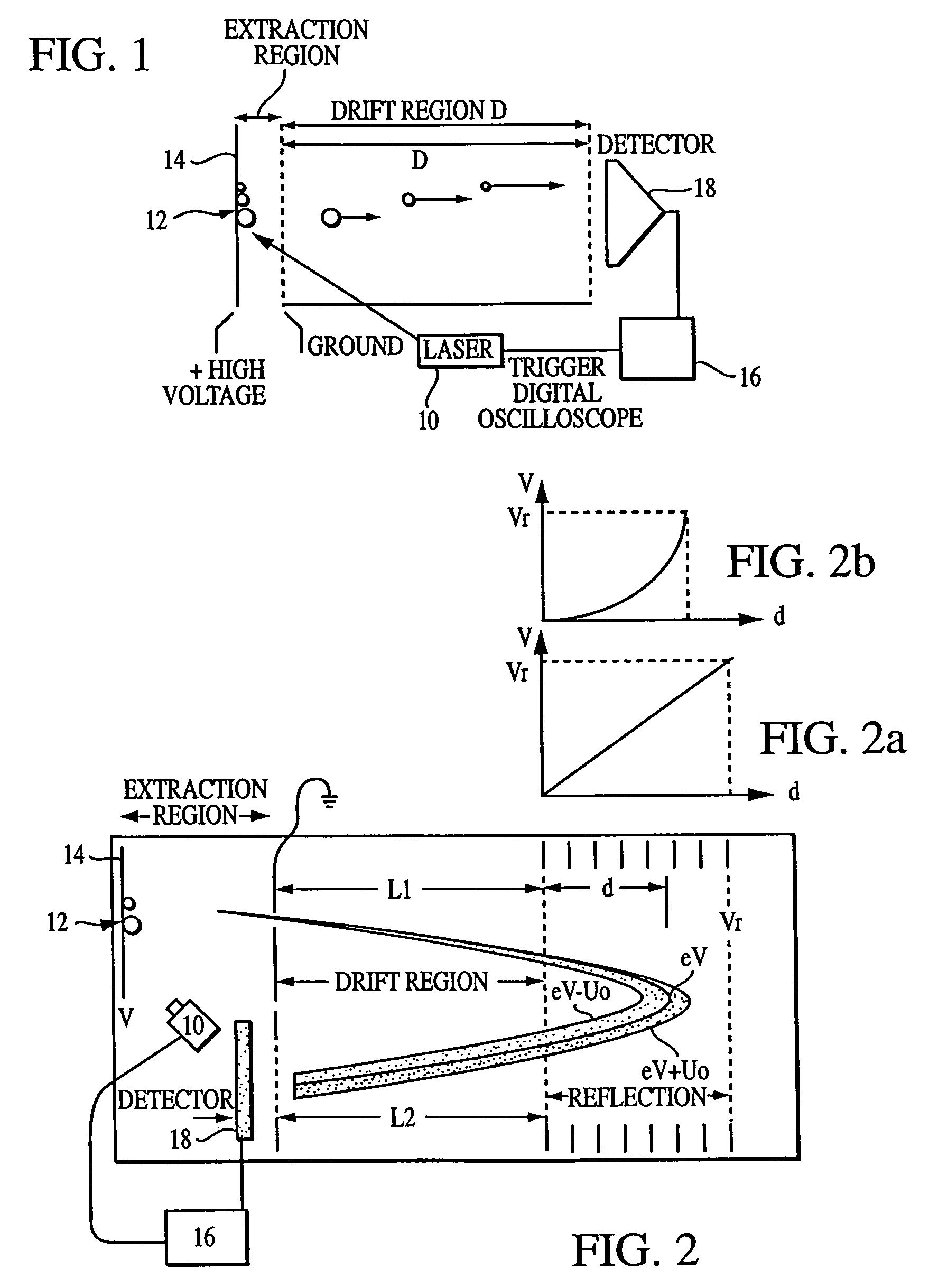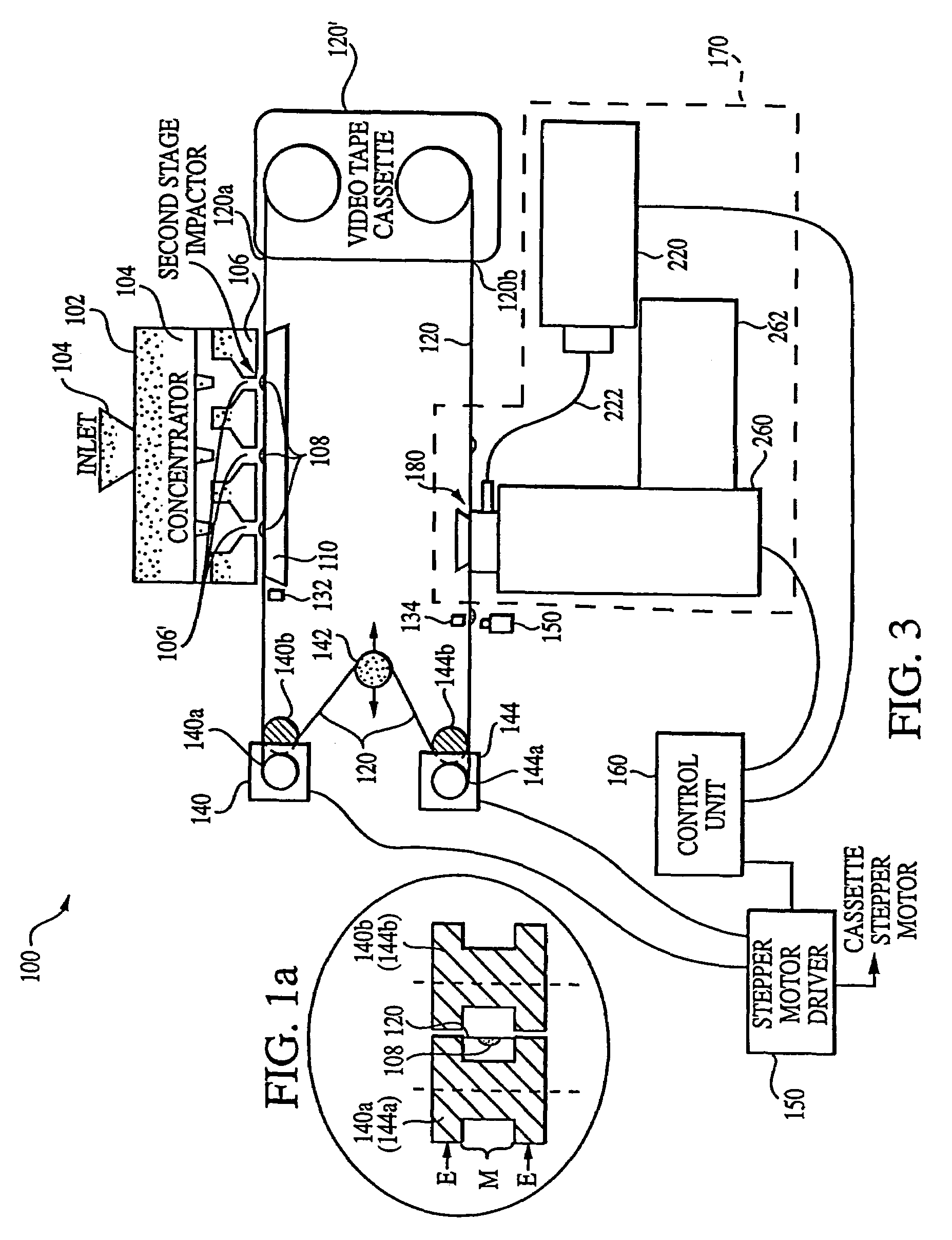Threat identification in time of flight mass spectrometry using maximum likelihood
a mass spectrometry and maximum likelihood technology, applied in the field of mass spectrometry and mass spectrometers, can solve the problems of high data acquisition time of typical scanning mass spectrometers, confined to laboratory or other fixed sites, and inability to use mass spectrometer technology as a field portable detection system, etc., to achieve reliable and rapid detection of small levels of biological and chemical samples, wide agent bandwidth, and high sensitivity
- Summary
- Abstract
- Description
- Claims
- Application Information
AI Technical Summary
Benefits of technology
Problems solved by technology
Method used
Image
Examples
Embodiment Construction
[0002]This invention was made with Government support under Contract No. MDA972-01-D-0005; awarded by DARPA. The Government has certain rights in the invention.
FIELD OF THE INVENTION
[0003]The invention relates to mass spectrometry, mass spectrometers and applications thereof.
BACKGROUND OF THE INVENTION
[0004]Mass spectrometers provide a fundamental tool of experimental chemistry and have proven useful and reliable in identification of chemical and biological samples. Mass spectrometry is a technique used to determine the masses of molecules and specific fragmentation products formed following vaporization and ionization. Detailed analysis of the mass distribution of the molecule and its fragments leads to molecular identification. The combination of specific molecular identification and extreme sensitivity makes molecular spectroscopy one of the most powerful analytical tools available.
[0005]However, the typical mass spectrometer is confined to the laboratory or other fixed sites due...
PUM
 Login to View More
Login to View More Abstract
Description
Claims
Application Information
 Login to View More
Login to View More - R&D
- Intellectual Property
- Life Sciences
- Materials
- Tech Scout
- Unparalleled Data Quality
- Higher Quality Content
- 60% Fewer Hallucinations
Browse by: Latest US Patents, China's latest patents, Technical Efficacy Thesaurus, Application Domain, Technology Topic, Popular Technical Reports.
© 2025 PatSnap. All rights reserved.Legal|Privacy policy|Modern Slavery Act Transparency Statement|Sitemap|About US| Contact US: help@patsnap.com



